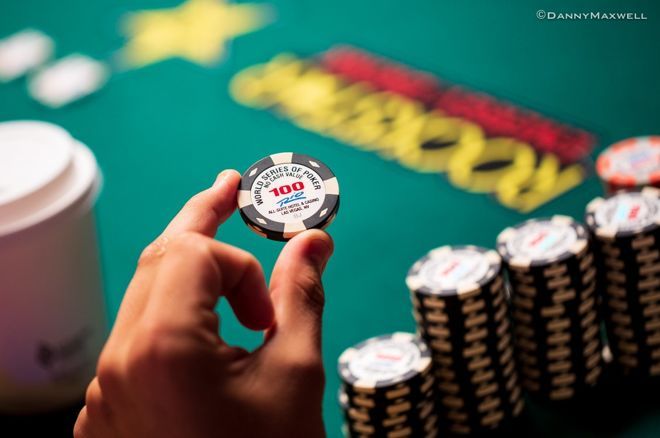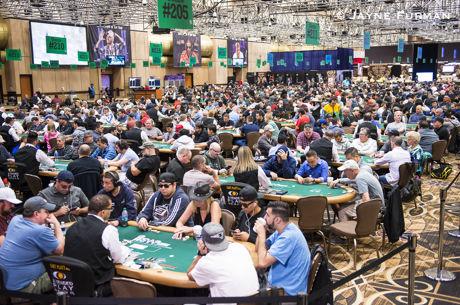Targeting Medium Stacks in the Big Blind

After playing a live tournament series, I often head home asking myself the same question �� "How do the players who consistently make deep runs repeatedly win more than their fair share of chips?"
The answer to this question is that they are getting away with opening more than their fair share of hands. But how? Almost every piece of poker study material available warns against opening too many hands. This advice is designed to keep your ranges strong enough to withstand attacks from good players.
But what if you aren't playing against good players? If they aren't capable of effectively attacking your loose opens, then there is no reason to tighten up.
The first line of defense are the players with position on you. If you are able to get past them, the player in the big blind is then primarily responsible for keeping you from running over the table. He should be your main target. In the small stakes games I play, the big blind is often ill equipped to hold down the fort.
Here's how I have been able to steal more pots than I should be allowed to when the players behind me are weak.
First Line of Defense �� The Players In Position
The players with position on me are the first line of defense preventing me from opening too many hands. There are more of them when I open from early position, so I focus my efforts on late and middle position opens. If I am opening more than my fair share of hands, these players should be three-betting me often preflop and bluff-raising me often postflop.
In the small stakes games I play, these in-position players are much more likely just to call than to three-bet. This can be a problem if they are competent postflop, but fortunately most of them are not. Oftentimes, they just play fit or fold.
The beauty of this is that their preflop call entices the big blind to come along with an incredibly wide range. If the player in position folds to my continuation bet and the big blind calls with his wide range, he will have a hard time defending it on turns and rivers. This is where I make my money.
Last Line of Defense �� The Player In The Big Blind
In these small stakes game, most of my opponents call river bets too often when it doesn't cost them their whole stack to do so. For this reason, I only widen my opening ranges when stacks are such that I can put them all in on the river. I find this to be the case when stacks are between 25 and 50 big blinds.
If the players in position aren't defending effectively and the big blind has this target stack size, I open a very loose range down to medium offsuit one-gappers and suited two-gappers as long as I have a similarly-sized stack that poses a real threat. I like these semi-connected hands because they often flop and turn equity that decreases how often my bets need to work.
Generally, small stakes players in the big blind will call preflop and on the flop with a very wide range and make folding mistakes on turns and rivers once they realize their hand is too weak to play for their entire stack.
In the past, I would have folded my marginal hands in these spots to preserve preflop fold equity on three-bet shoves over aggressive openers at the next blind level. Now, I believe I should open wide and use my stack for its postflop fold equity instead.
I prefer this approach because the three-bet shove over an aggressive opener is an obvious bluffing spot that costs me my entire stack when it fails and it only has one shot to force a fold.
Taking the postflop approach lets me play my uncapped range in position against the big blind's wide, capped range out of position. Each street presents another opportunity to force a fold. If he wants to play for stacks, he will likely raise and give me an opportunity to fold and preserve my stack for another attempt later. When he decides to just call, he caps his range even further which increases my fold equity on subsequent streets.
Conclusion
Keep in mind that this strategy is heavily dependent on your opponents being predictably passive. It is easily exploited by frequent preflop three-bets, postflop bluff raises, and traps with two pair or better. This strategy will not work for you if you regularly see these plays in your game. Luckily, there are plenty of small stakes tournaments where this is not the case.
This strategy of frequently attacking medium-stacked players in the big blind has resulted in me winning lots of small-to-medium pots without showdown. This keeps my stack afloat as the blinds escalate throughout the tournament instead of being forced into shove-or-fold mode while waiting for real hands.
Also, if I am fortunate enough to double-up when I finally do get a real hand, I do so from a medium-to-big stack instead of from a small-to-medium stack. This puts me in position to win the tournament instead of just surviving long enough for a min-cash.









